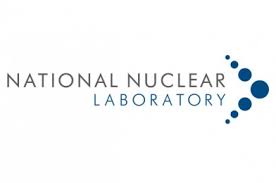The U.K. Space Agency and the National Nuclear Laboratory are collaborating to create the world’s first space battery powered by americium-241. The isotope will be extracted from spent nuclear fuel stored at the Sellafield site in Cumbria.
Radioisotope power systems are sometimes referred to as nuclear batteries. The current technology uses plutonium-238 as a fuel. Radioisotope thermoelectric generators and radioisotope heater units can supply power and heat continuously over long missions into deep space. Pu-238 is made by irradiating neptunium-237. The Np-237 is recovered from research reactor fuel or special targets in research reactors. Pu-238 is only produced in small amounts in the U.S. and Russia. An alternative is urgently needed.
This NNL work is commissioned and funded by the U.K. Space Agency. It will be delivered in a new twenty-three million dollar laboratory at NNL’s flagship Central Laboratory on the Sellafield site in Cumbria. The new laboratory will be filled with next generation equipment and technology.
NNL said that it will deliver a sovereign supply of fuel for space batteries in the context of a global shortage. This will enable the U.K and its partners to pursue new space science and exploration mission.
The support from the U.K. Space Agency follows the U.K. record investment in the European Space Agency for a variety of new programs. One of the investments of this program is twenty-two million dollars for the European Devices Using Radioisotope Energy (ENDURE) which will use radioisotopes to develop systems for warming and powering spacecraft.
NNL said that it had been working on this project since 2009 when its researchers first discovered that americium-241 is produced during the radioactive decay of spent nuclear fuel from commercial nuclear power reactors. The isotope emits power for four hundred years. In 2019, NNL and the University of Leicester announced that they had generated usable electricity from americium. This achievement was a major step towards potential use of americium in space batteries.
With the plentiful supply of Am-241 at Sellafield, the new collaboration “will turn a proven scientific concept into a fully-realized technology”, the collaborators said. The Am-241-powered space battery is expected to be operational within the next four years. It is likely to be used first on the European Space Agency’s Argonaut mission to the Moon and for future missions into deep spaced.
George Freeman is the U.K. Science Minister. He said, “Being able to offer a globally unique supply of americium-241 will encourage investment and unlock growth opportunities for all sorts of UK industries looking to explore nuclear energy.”
Tim Tinsley is the account director for this project at NNL. He said, “For the past 50 years, space missions have used plutonium-238 to stop spacecrafts from freezing but it is in very limited supply. At NNL we have identified significant reserves of americium-241, a radioisotope with similar properties to plutonium-238 but game-changing potential for the UK's space ambitions. This work, which is being made possible through the support of UK Space Agency, will see us applying decades of experience in separating and purifying used nuclear material in order to unlock great public benefits, and it goes to the heart of our purpose of nuclear science to benefit society.”
Paul Bate is the CEO of U.K. Space Agency. He said, “This innovative method to create americium to power space missions will allow us not only to sustain exploration of the Moon and Mars for longer periods of time, but to venture further into space than ever before. Supporting the National Nuclear Laboratory's expansion will make the UK the only country in the world capable of producing this viable alternative to plutonium, reducing the global space community's reliance on limited supplies, which are increasingly difficult and costly to obtain. The UK Space Agency is committed to keeping space activities sustainable, and this resourceful technology exploits otherwise unused waste plutonium biproducts without generating additional waste.”
